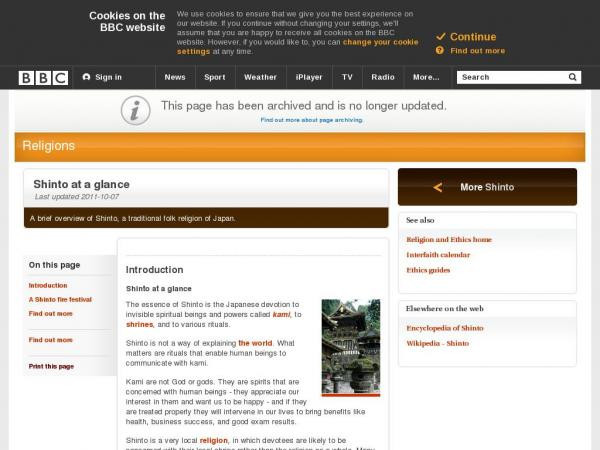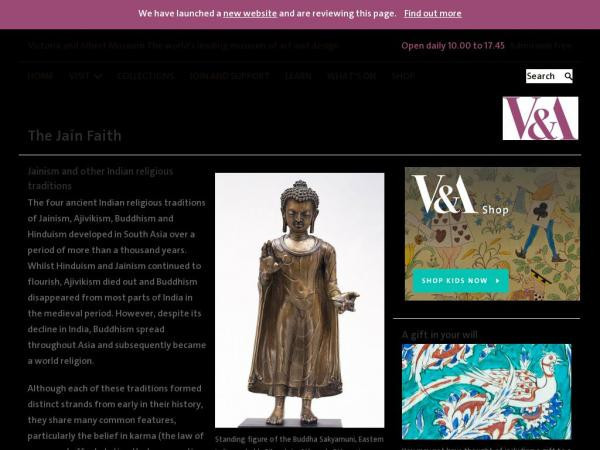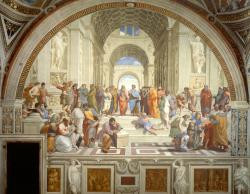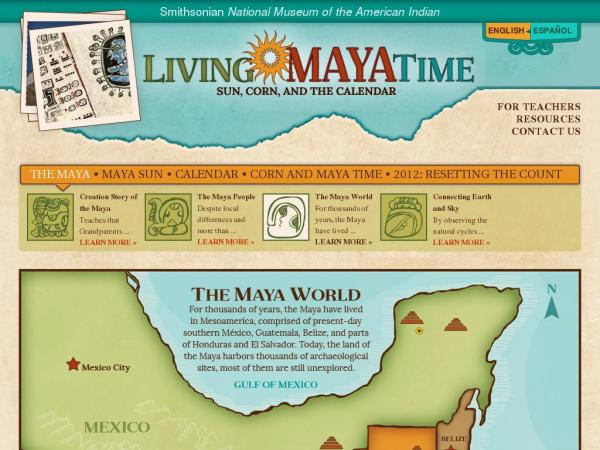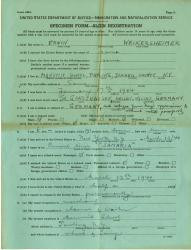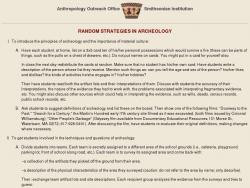Kate Harris
Social Studies teacher
Pittsburgh CAPA
Middle School (13 to 15 years old), High School (16 to 18 years old)
Teacher/Educator
Language Arts And English, Civics, Literature, Cultures, Economics, Social Studies, Geography, Writing, US History, Arts, Other
I'm a history-lover, art fan, and bookworm. I taught high school history (U.S. History and World Religions) for ten years in North Carolina, teach currently in Pittsburgh, PA, and am working to help teachers make the most of this new resource!
Kate Harris's collections
1950s Conformity and Counterculture
The 1950s were a period of post-war peace and prosperity. The growing economy and baby boom led to a culture of consumerism and growing Cold War tensions led to an embrace of all things American. This student activity includes a number of images reflecting the 1950s (most of them in postage stamp form). After investigating these images and evaluating how they support or challenge conformity, students are asked to research the counterculture that began to develop in the 1950s. The final assessment asks students to create a stamp image reflecting one of the people, events, or movements that pushed back against 1950s conformity. <br /><br />
Guiding questions:<br />
-What caused a sense of American conformity to develop in the 1950s? How was this feeling expressed?<br />
-What challenges to conformity existed in the 1950s?<br />
-Is it more "American" to conform or to rebel?
 Kate Harris
Kate Harris
19
"Let Women Fly!": Female Aviators and Astronauts
<p>Did you know that astronaut Mae Jemison carried a picture of aviator Bessie Coleman in her uniform pocket? Or that astronaut Sally Ride was a major supporter of vice presidential candidate Geraldine Ferraro? Maybe you knew that Jane Briggs Hart was Michigan's first female helicopter pilot and flew her husband, the late Senator Hart, to his political campaign stops as well as being vocal and liberal political activist? Find out about these inspirational women and others in this collection. This topical collection is a great starting point for research about female aviators and astronauts, and includes articles, images, artifacts, and video. Some guiding questions to consider might be:<br />-Why do you think it was so challenging for female pilots to become accepted? Compare the inclusion of women in aviation to other industries and fields. <br />-What role did the military play in the growth in the number of female aviators?<br />-What connections can you find between various female pilots and astronauts?<br />-Is being the "first" of something a political act? How do many female aviation leaders use their public voice?</p><p>#BecauseOfHerStory<br /></p>
 Kate Harris
Kate Harris
48
Rachel Carson: Innovator
<p>In what ways was Rachel Carson an innovator? She diligently pursued her goals as a female scientist and author and sparked the environmental movement with her book "Silent Spring." As you look through this collection, consider the characteristics of innovators. What innovative characteristics do you share with her?</p>
<p>For more on the characteristics that make up an innovator, look at the Heinz History Center website. You can even take a quiz and find out what innovator you are most like:</p>
<p><a href="http://www.heinzhistorycenter.org/education/school-programs-k-12/steam/innovator-mtch-up">http://www.heinzhistorycenter.org/education/school...</a></p>
<p>tags: Pittsburgh, science, environment,Silent Spring, Chatham, Maine, Fish and Wildlife Service, #BecauseOfHerStory</p>
 Kate Harris
Kate Harris
15
The Mughal Empire
<p>What is the role of art and culture in the expansion of nations or empires? This collection traces the general history of the Mughal Empire and its influence on Indian art. The Mughals were a dynasty of Islamic leaders who conquered India in the 16th and 17th centuries. Their blend of influences and the stylistic preferences of the emperors created a distinct style. </p><p>Guiding questions to consider are:</p><p>How did the Mughals assert their authority over and create a sense of unity within India?</p><p>Why is art so important to powerful leaders, and how can they influence artistic styles?</p><p>Tags: religion, culture, syncretism, Islam, Muslim, India, Hindu, cause effect, chronology</p>
 Kate Harris
Kate Harris
14
The Black Power Movement
<p>Teaching about the Black Power Movement can be challenging, but has rich rewards. Misconceptions about the Black Power Movement abound, but the ability to contrast their strategies and aims with the earlier Civil Rights Movement allows Social Studies teachers to discuss the complex ways that social movements evolve, change, and respond to the times. In addition, a study of the Black Power Movement helps give context for a broader study of the economic and political shifts in the 1970s and 1980s and the rise of identity politics. This teaching collection includes a variety of resources that could be used to teach about the Black Power Movement, organized into sections for:</p><p>-People in the Movement</p><p>-Goals and Strategies of the Movement</p><p>-Teaching Activities</p><p>General guiding questions for this collection include:</p><p>-What were the distinct problems that the Black Power Movement tried to address? Do they remain today?</p><p>-What were the strategies of the Black Power Movement? Do you agree or disagree with these? </p><p>-Why and how do social movements develop and evolve? </p><p>-What defines a successful social movement? Was the Black Power Movement successful?</p><p>- Can a social movement survive beyond the demise of its leadership?</p><p>-What is the role of the arts in promoting the ideals of social movements?</p><p>This is a work-in-progress based on the digitized materials within the Smithsonian Learning Lab's collection--it is not meant to be wholly definitive or authoritative.<br /></p>
 Kate Harris
Kate Harris
31
Earl Hines: An Innovative Jazz Musician
<p>Earl Hines embodies the innovator mindset because he was experimental, collaborative, resilient and resourceful. He invented a new style of playing the piano and became well-known for his work with other jazz musicians. As you look through this collection, try to find more examples of his innovator mindset. </p><p>For more on the characteristics that make up an innovator, look at the Heinz History Center website. You can even take a quiz and find out what innovator you are most like:</p><p><a href="http://www.heinzhistorycenter.org/education/school-programs-k-12/steam/innovator-match-up">http://www.heinzhistorycenter.org/education/school...</a></p><p>tags: Pittsburgh, Chicago, jazz, segregation, music</p>
 Kate Harris
Kate Harris
16
How Siddhartha Became the Buddha
<p>This collection teaches students about the biography of Siddhartha Guatama and asks them to analyze images depicting stages of his life. Students will also learn about the different mudras, or hand gestures, that the Buddha makes. Quiz questions and hot spots are embedded throughout to check for understanding and support learning. </p><p>Tags: Siddhartha, Buddha, Buddhism, reincarnation, religion, India</p>
 Kate Harris
Kate Harris
12
The Achievements of Ancient Mayan Civilization
This collection reviews the major achievements of the ancient Mayan civilization, including its great cities, use of writing, calendar, religious beliefs, art, and architecture. Resources are provided as a basis for student research. Several of the videos are available in Spanish and English and would be useful for a Spanish language teacher who wants students to research the Maya.
Guiding questions to consider while reviewing this collection:
1) In what ways did observation of the sun influence multiple facets of ancient Mayan life?
2) Which elements of ancient Mayan life persist in Mayan culture today?
3) How are art, religion, and architecture seemingly intertwined in ancient Mayan culture?
4) What are the various theories about the demise of the ancient Mayans?
This collection focuses on the achievements of the ancient Mayans; however, it is critical to remember that the Maya are a living people and continue to preserve old traditions while building new ones in the modern world. For those interested, here is a collection on the modern Maya: https://learninglab.si.edu/collections/the-maya-people-today/yKMyzCEPMadkGgA8.
 Kate Harris
Kate Harris
25
The Maya People Today
This collection includes many videos, in English and Spanish, and resources showing how the Mayan people living today have preserved their traditions while adjusting to modern life. Students can use the collection to learn about the values and traditions that remain important in Mayan life today.
Those who want to learn more about the ancient Maya should view this collection:
https://learninglab.si.edu/collections/the-achievements-of-ancient-mayan-civilization/Cb7G8r7LdVF6mGqm
 Kate Harris
Kate Harris
23
Poster and Music Analysis: Joe Hill and the IWW
<p>This collection includes an iconic labor union poster and is intended as a warm-up activity for a lesson on labor unions in the late 19th and early 20th century. Discussion questions and songs by and about Joe Hill are included. </p>
<p>Guiding questions to consider:<br />-What conditions led to the development of labor unions?<br />-How did the philosophy of the IWW, or Wobblies, differ from other labor unions?<br />-Why has Hill remained an iconic figure for the labor movement?</p><p>#SmithsonianMusic<br /></p>
 Kate Harris
Kate Harris
3
Photograph Analysis: Migrant Workers in the Great Depression
This collection includes only one image and is intended as a discussion-based warm-up to a lesson on the Great Depression and migrant families. Suggested questions for discussion, a photograph analysis worksheet and a writing prompt are included.
 Kate Harris
Kate Harris
4
Who discovered America?
The question "Who discovered America?" invites a lot of discussion, now that many of us recognize that the simple answer of "Columbus" is not entirely accurate. This collection includes resources to help support student investigation into the answers of these questions:
-What does it mean to "discover" a place?
-How did the first peoples arrive in the Americas?
-What claims to the Vikings and the Chinese have to the discovery of America?
-Should Columbus be celebrated as a hero, villain, or something in between?
There are discussion questions and additional links throughout the collection. Teachers and students are invited to explore the many websites included to further their research.
 Kate Harris
Kate Harris
18




